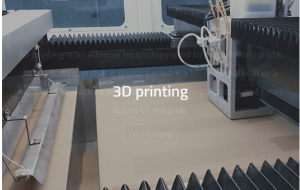CNC Prototyping | Transmuting Complex Design To Reality
CNC prototyping plays a crucial role in the high-speed design and production sector and helps engineers and industrialists to do their works with finesse when it comes to bring new, intricate and beautiful concepts into life. This process uses sophisticated CNC (Computer Numerical Control) technology to make quick and accurate prototypes from various materials. CNC prototypes has efficiency and high accuracy, paving the way to be the perfect choice for projects that need to be honed to detailed specifications with tight tolerances.
Ultimate Speed and Precision
When compared to traditional prototyping methods, CNC prototyping is much faster. This allows CNC machines to create parts in only a few hours (days depending on the complexity), which speeds up the product development cycle. In addition, The precision of CNC prototyping enables that provide designers to allow tolerances go as tight as ±0.005 inches, integral when dealing with components that fit together in a intricate assembly.
Providers of Impossible to Handle Geometries
One of the most significant advantages of CNC prototyping is there capability to tackle complex geometries engendered with material attributes that other prototyping methods cannot beat. CNC machines can work across multiple axes allowing for more intricate designs including undercuts, sharp internal corners, and complex curves, while still maintaining precision. This is particularly useful for industries like aerospace and medical devices, where specialized shapes and high precision are required.

Material Versatility
A major advantage of CNC prototyping is the optional material selection. CNC machines can be used to cut a wide variety of materials, ranging from metals such as aluminum and steel to plastics and composites, in order to fulfill specific property requirements, including strength, heat resistance and aesthetic appearance. This flexibility allows product developers to test their designs in the material that will be used in their final product, giving a true picture of how the product will perform and function.
Low-Volume Production Cost Efficiency
Yes, CNC prototyping considers an investment compared to 3D printed prototypes, but it is absolutely economical for low quantity production and complicated part manufacturing. While traditional methods might require costly moulds or setups for each new iteration of a design, individual configurations can be switched around with CNC machines at no major additional expense. This is especially beneficial during the prototyping process, where numerous iterations and changes typically occur to hone the functionality and design of the product.
Final Considerations: Potentially Maximising Your Design
Using CNC prototyping as part of the design process increases your capacity to investigate and see-through intricate designs with confidence. This secures the connection of digital principles and their use in reality, by offering a quick, mobile, as well as clear method for prototyping and testign variants. As computing technology progresses, the potential of CNC prototyping to expedite R&D and increase the precision of intricate manufactured products also inherently increases, further establishing it as the backbone of contemporary manufacturing processes and design patterns.